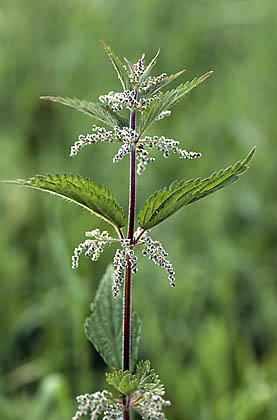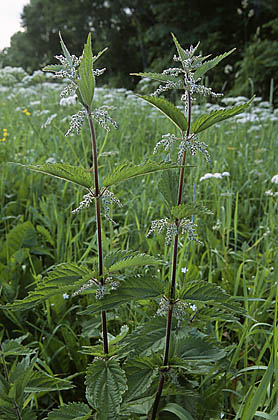Valuable weed – stinging nettle
Photos: Arne Ader
Translation: Liis
Nettle
Stinging nettle Kõrvenõges Urtica dioica
Backyards and road verges, old manure piles in the countryside, field verges and broadleaf forests are the most common habitats of nettles; it prefers a fertile soil but can also grow in cracks in stone walls. In suitable conditions the plant spreads by its yellow underground stems that become wooden and put out numerous side shoots from which new plants grow up. So the nettle can become a rapidly spreading weed that is difficult to eliminate.
A well known herb, as well as a plant with magic effects. Those who enjoy food can use the nettle already in an early-spring salad and as an estimate it is equivalent with spinach in value. From the stem with its long fibres an expensive fabric with a slight silk sheen is produced for the trend-conscious …
Do we know how and why the nettle stings?
We need to use a magnifying glass as an aid. The hairy leaves as well as the stem have slightly longer, thicker and stiffer hairs – the stinging hairs that have a button-like formation at their tip. At the root of the stinging hair a container for liquid is hidden and when the tip of the fragile hair breaks at a touch, creating a tiny wound in the skin, a small drop of the substance penetrates into the wound; the substance contains formic acid, histamine, acetylcholine – from this a quite long-lasting itch is guaranteed, and for some even blisters.
The stinging hairs protect the plant against herbivores, but the furry caterpillars of the peacock butterfly and the Nymphalidae or brush-footed butterflies”know” how to evade the stinging hairs and feed on the leaves of the nettle. When there are many butterfly caterpillars nettles stand bare..
Stinging nettle










